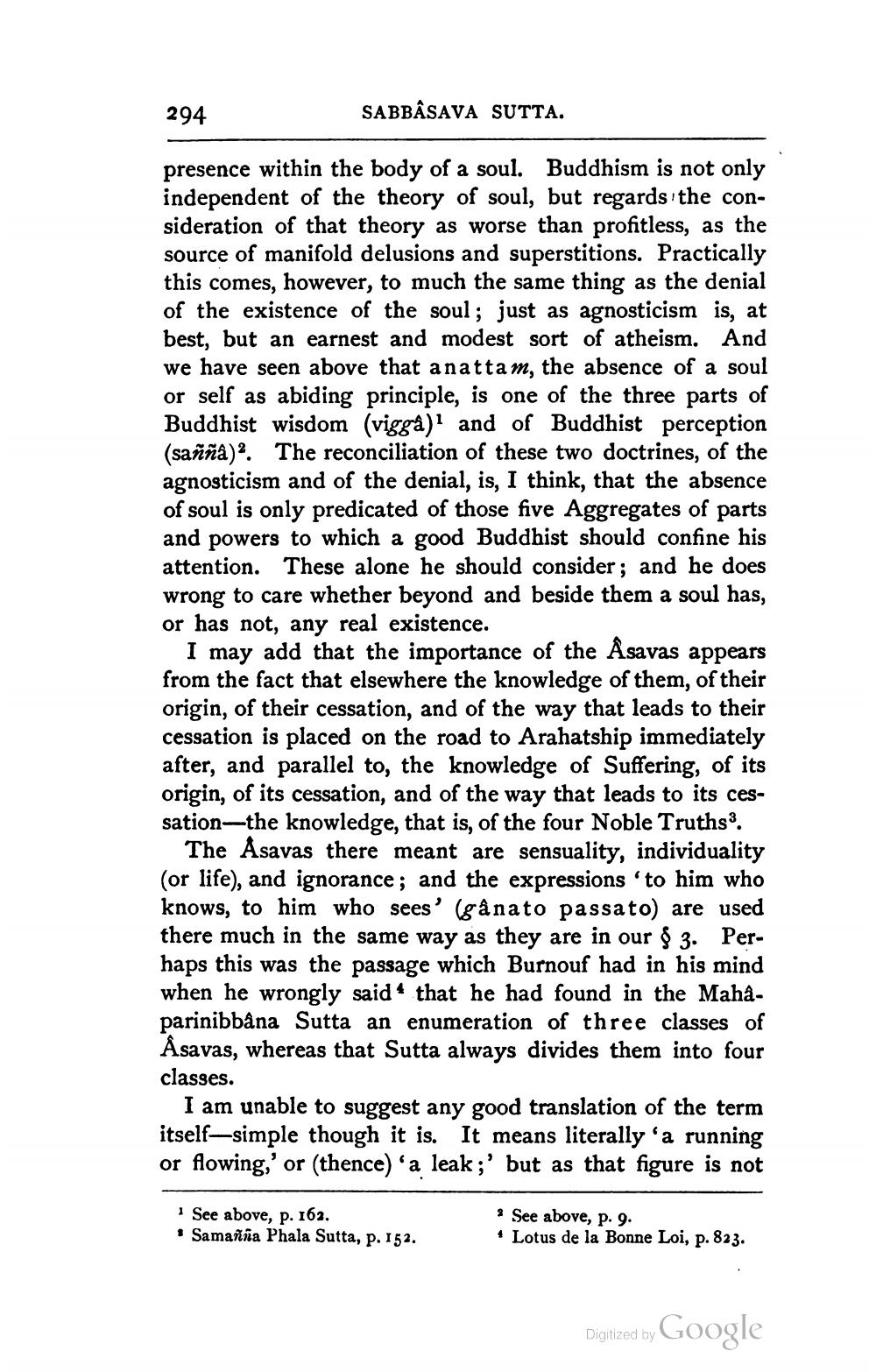________________
294
SABBASAVA SUTTA.
presence within the body of a soul. Buddhism is not only independent of the theory of soul, but regards the consideration of that theory as worse than profitless, as the source of manifold delusions and superstitions. Practically this comes, however, to much the same thing as the denial of the existence of the soul; just as agnosticism is, at best, but an earnest and modest sort of atheism. And we have seen above that anattam, the absence of a soul or self as abiding principle, is one of the three parts of Buddhist wisdom (vigga)' and of Buddhist perception (sañña). The reconciliation of these two doctrines, of the agnosticism and of the denial, is, I think, that the absence of soul is only predicated of those five Aggregates of parts and powers to which a good Buddhist should confine his attention. These alone he should consider; and he does wrong to care whether beyond and beside them a soul has, or has not, any real existence.
I may add that the importance of the Åsavas appears from the fact that elsewhere the knowledge of them, of their origin, of their cessation, and of the way that leads to their cessation is placed on the road to Arahatship immediately after, and parallel to, the knowledge of Suffering, of its origin, of its cessation, and of the way that leads to its cessation-the knowledge, that is, of the four Noble Truths.
The Asavas there meant are sensuality, individuality (or life), and ignorance; and the expressions 'to him who knows, to him who sees' (gânato passato) are used there much in the same way as they are in our $ 3. Perhaps this was the passage which Burnouf had in his mind when he wrongly said that he had found in the Mahaparinibbana Sutta an enumeration of three classes of Åsavas, whereas that Sutta always divides them into four classes.
I am unable to suggest any good translation of the term itself—simple though it is. It means literally a running or flowing,' or (thence) a leak;' but as that figure is not
See above, p. 162. . Samañña Phala Sutta, p. 152.
? See above, p. 9. 4 Lotus de la Bonne Loi, p. 823.
Digitized by Google




